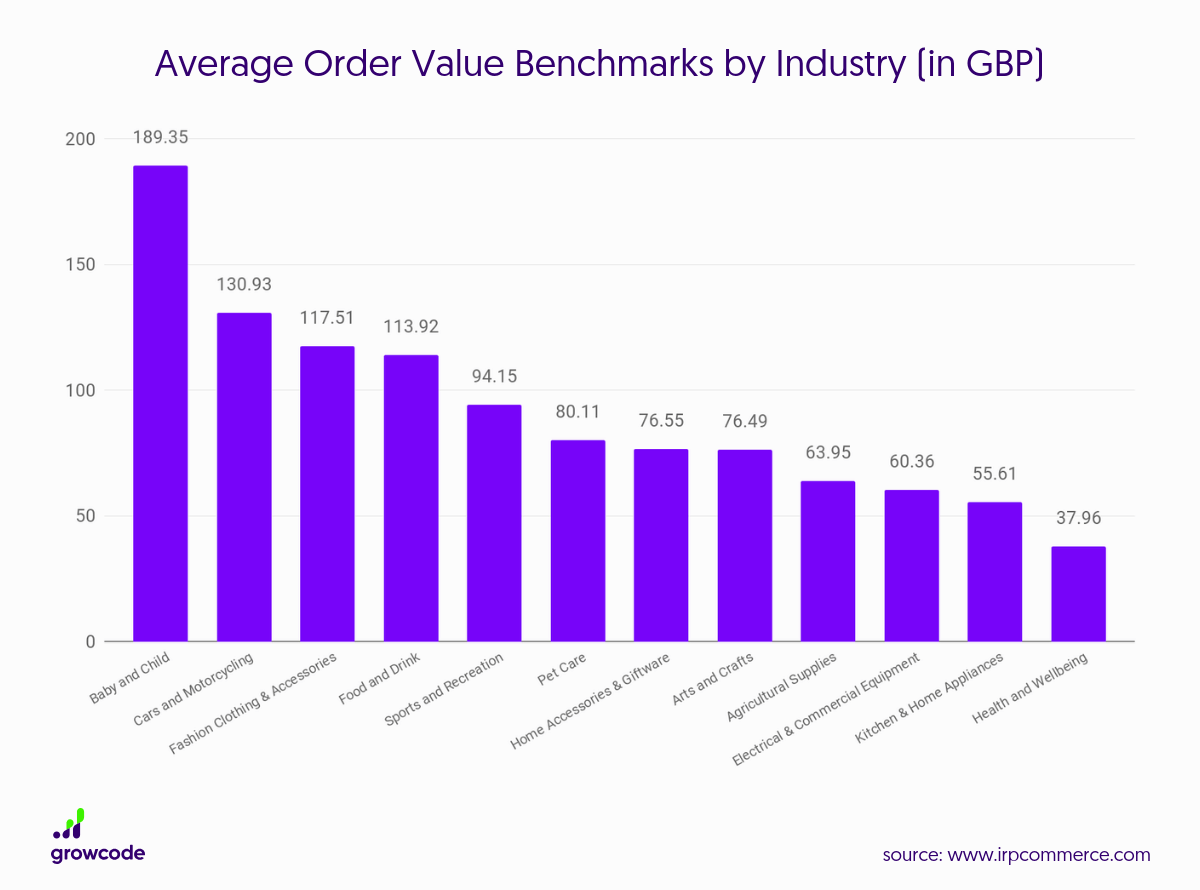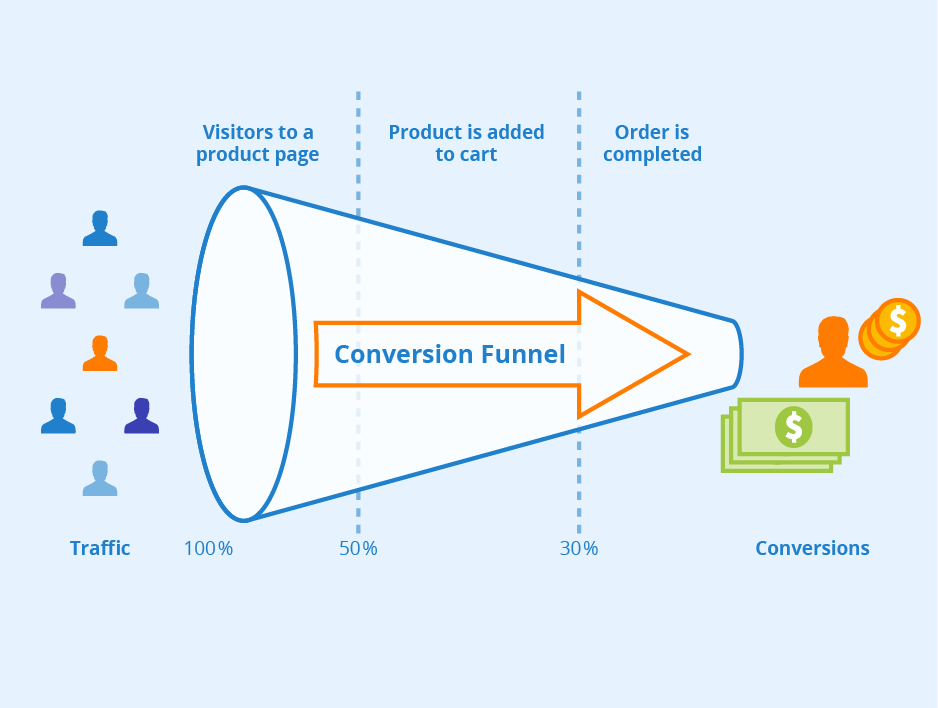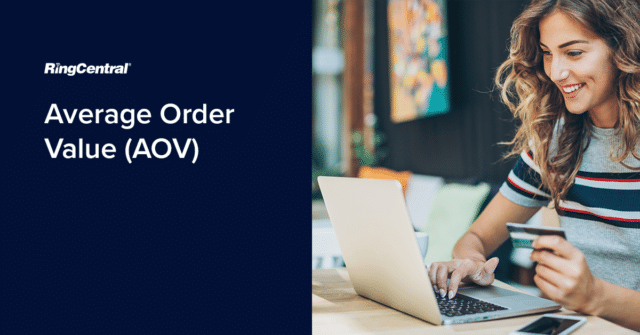Gathering data and analysing it is key to developing as a business. When it comes to considering the important metrics of your online store, one term you will see frequently mentioned is average order value (AOV). It may seem self-explanatory, but what exactly is AOV? Why is it an important metric? How do you calculate it?
Let’s take a look at what it is, why it matters, and how you can improve it.
What is Average Order Value (AOV)?
Many people consider AOV to be one of the most important metrics retailers can analyse. It tracks how much your customers spend on average when they purchase at your store. This could be purchases made in a physical store, through an app or on your eCommerce website.
AOV can help you identify your customers’ behavioural traits and allow you to adjust things such as marketing strategy and pricing strategy in response. Many organisations, including Amazon and Shopify, analyse this metric regularly, even daily in some cases. The bottom line is that every business wants to see the average amount spent increase.
The graph below shows various industry AOV benchmarks in GBP. After all, it’s no use operating in a vacuum. Your industry benchmark should act as a guide to what you are aiming to emulate – and outdo. If possible, it’s also worth looking at the AOVs of your closest direct competitors and businesses operating in a similar location.

Why is Average Order Value Important?
Analysing your key metrics and knowing how to respond is an integral part of running an eCommerce store. The two factors that are most affected by AOV are your pricing strategies and your marketing strategies.
AOV allows you to identify the long term value of your business, what your customers are buying, and when they are buying it. Identifying patterns not only lets you plan future marketing but also allows you to evaluate your previous marketing strategy, as well as how well your pricing policies suit your customer base.
There is a proven correlation between higher AOVs and higher profits, which is important to any business. It is also worth bearing in mind that you do have customer acquisition costs associated with every order a customer makes. Increasing your AOV may see a reduction in those costs. It’s worth noting, however, that if you increase your digital marketing budget to boost your AOV, it may not be as much of a reduction as you’d expect.

AOV Formula: How to Calculate Average Order Value
Calculating your AOV in any given period of time is very simple. You divide the total amount of revenue in that period by the total number of orders.
AOV = revenue/number of orders
For example, if you were looking at one month where you had total revenue of £40,000 and a total of 1000 orders, then your AOV would be 40000/1000 = 40.
When calculating your AOV, remember that you are looking at what each basket generates in revenue, not each client. It doesn’t take into account repeat customers, as it focuses on individual orders. Remember that when people buy online, we do not see all of their habits.
Let’s say you’ve calculated an AOV over a year. This figure wouldn’t show you that 40% of your customers only bought something once a month while the rest purchased it weekly. It also wouldn’t account for potential differences based on seasons – you might expect Black Friday shopping to have higher order values than a random Tuesday in the middle of summer, for instance.
Average Order Value, Conversion Rate, and Revenue Per Visit
AOV, while an important metric, is usually not looked at alone. When making final decisions on future goals and strategies, companies usually look at combinations of metrics and composite metrics. Two eCommerce metrics that are useful to look at alongside average order value are conversion rate and revenue per visit.
Conversion Rate

In eCommerce, your conversion rate (CR) refers to the number of visitors to your site who actually make a purchase. For example, if your site receives 1000 visitors in a 24-hour period and 100 of them make a purchase, then your conversion rate for that day is 10%.
Conversion rate = number of actual checkouts/number of unique visitors to the site*
*if a customer visits your site 5 times in one day, that only counts as 1 visitor overall
From a cost perspective, it is better to convert the 90% of visitors who haven’t bought anything to attract new customers. You have already incurred expenses to attract those 1000 visitors through PPC (pay per click) advertising, SEO work, and so on, so you want to maximise your ROI on that spending.
Revenue per Visit
While AOV highlights the average spend of people who make an actual purchase, RPV gives you an average value based on the total visitors to your site, whether they make a purchase or not. It is a composite of both your conversion rate and your average order value. It gives you a precise data point of how much your eCommerce website or other portal earns each time someone visits.
RPV = total revenue/number of unique visitors to the site
If you’re a multi-channel retail operation, it’s worth calculating this for each channel independently so that you can monitor trends unique to each platform.
While many businesses look more at the two metrics that contribute to RPV, using this metric can significantly increase AOV and CR, thus increasing overall revenue.
How to Improve Your Average Order Value

Once you have a better understanding of average order value and its associated metrics, you can then move to the next stage of looking at improving your eCommerce AOV. The roadmap for achieving this can offer several different routes, and you may consider using one or more of them.
Before considering which strategy works best for you, it helps to identify which goal you specifically want to attain; customers buying more of your products or customers buying more expensive items (or both). This optimisation can take place at any or all steps of your sales funnels. Here are some common tactics you can employ:
-
Upselling:
When a customer is looking at a certain product, you can make product recommendations for a more expensive alternative. For example, if they buy a 32” Smart TV, you may want to upsell another 32” TV with more features at a higher price point.
-
Cross-selling:
Bundling products together can be a great way of increasing your AOV. For example, if a customer buys a pair of dress trousers from your site, you may want to cross-sell shirts that match with it. And then, you can even suggest ties go with the shirt!
-
Discounts on multiple items:
This is a tactic that you will often see employed by online businesses and supermarkets. You offer a significant discount if they buy more than one unit of a particular item. For example, you may see a bottle of wine priced at £6.99 but with an offer to buy 3 bottles for £15.
-
Free shipping:
The Royal Mail found that 47% of UK customers expect free delivery. However, this is not always realistic on low-value items. You can increase your AOV by linking free shipping to higher value items or a minimum purchase value. Customers are more likely to increase their basket value to hit the free shipping threshold.
-
Future discount coupons:
Customers love discount coupons, and they have been proven to make them happier. They can be a great way of increasing your AOV by encouraging return visits and purchases. A coupon can be linked to a particular product or total basket value.
So, you may decide to offer a £10 discount on their next purchase when they spend £100. People will be tempted to spend a little more to reach that threshold to get a discount on their next visit. This can work alone or in tandem with the free shipping offer.
-
Loyalty programs:
By offering loyal customers benefits, you can encourage them to return to your store rather than look elsewhere. For instance, you can give them a certain amount off after they’ve spent a particular amount or made a set number of purchases.
-
Good returns policy:
If you are in eCommerce, then returns and exchanges are regular, particularly if you sell clothing. It may be an inconvenience to both you and the customer, but offering a good, hassle-free policy to deal with it can encourage those non-buying visitors to make a positive decision.
People are often reluctant to purchase higher value items when there is no clear returns policy or fraught with difficulties. If they see they can easily return something, they are more likely to make that more expensive purchase.
These strategies can be applied in a variety of ways. You may choose some as a blanket policy or decide to segment your customers into different groups. These could include higher or lower spenders, regular shoppers, and even those visitors who haven’t made a purchase but have left their contact details.
Choosing the Right Tools

Having good strategies means little if you do not have an efficient way of communicating with your customers.
RingCentral’s cloud phone system not only makes your organisation more efficient. It also helps to provide a better customer experience and can aid with customer retention. If customers are unsure about making that large purchase, picking up the phone and getting quick answers can help them make their decision.
This system allows for easy integration with all your important software, including your CRM – perfect for providing personalised solutions to those questions.
Whether your online business is small or large, RingCentral offers solutions to suit every budget while offering ideal scalability to ensure the solutions can grow as your company does. If you want to see what RingCentral can do for you, why not request a demo today.
Originally published Aug 02, 2021, updated Apr 10, 2023

